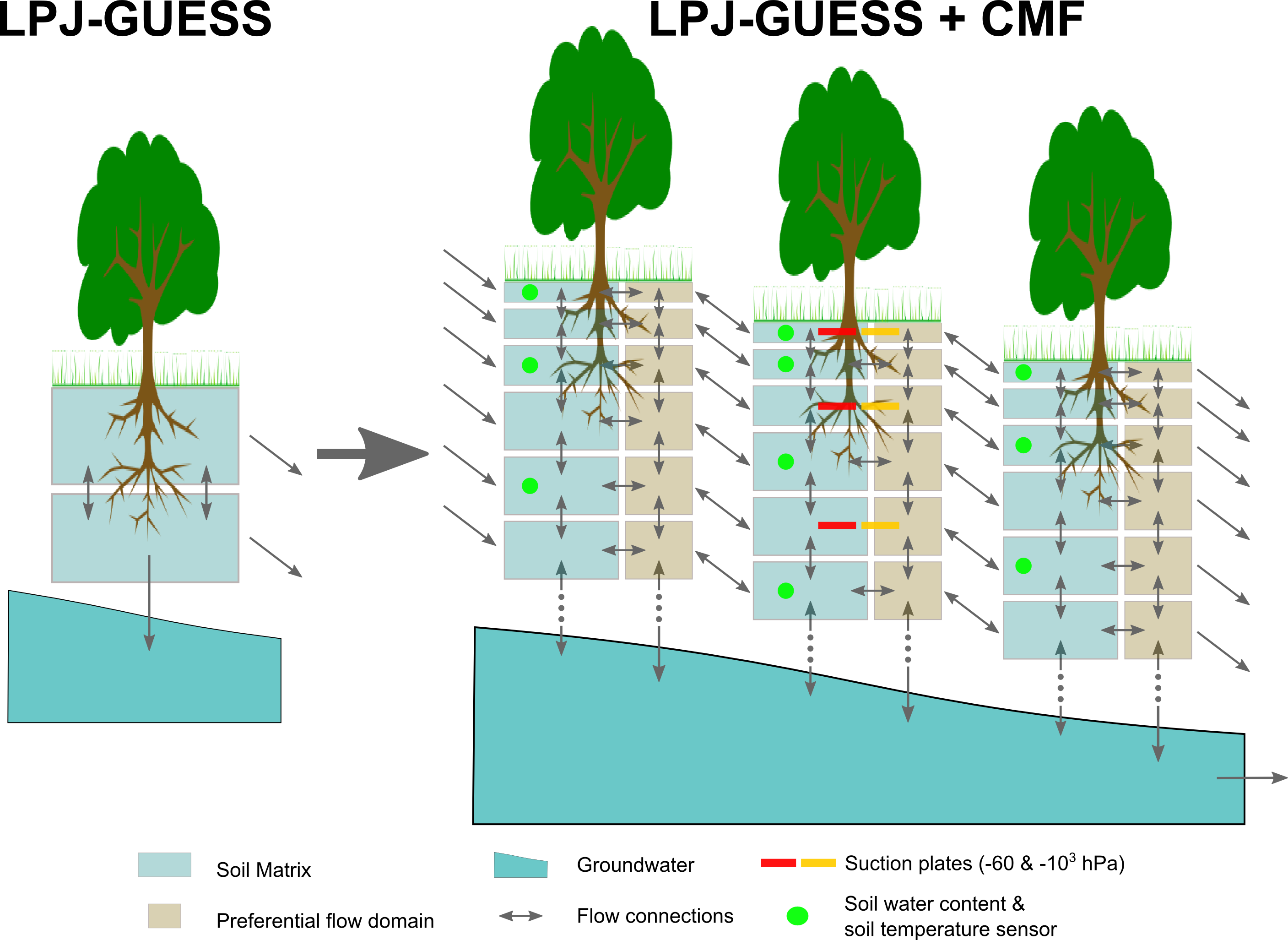A2 Simulating response and effect mechanisms of global climate change on hydrological fluxes in tropical montane ecosystems [funded by DFG]
PI(s) for this project:
Prof. Dr. Lutz Breuer
Dr. David Windhorst
Abstract:
 Current Land Surface Models (LSM) used to investigate global change effects have shown (1) great deficiencies in the representation of water related feedback mechanisms between biotic, climatic and hydrological processes and (2), oversimplified hydrological components effecting the water movement and traits of the vegetation. As a consequence, the impact of preferential and lateral flow on water and nutrient availability, inter-species root competition on water uptake or dynamic adaptation of plants to climate and land use conditions are poorly represented in current LSMs. These effects are especially pronounced in complex and diverse landscapes like the tropical mountain rainforests of south Ecuador. This casts doubt on the ability of current LSMs to correctly model how global change might affect future biomass production and water fluxes or shape vegetation structures in such ecosystems.
Current Land Surface Models (LSM) used to investigate global change effects have shown (1) great deficiencies in the representation of water related feedback mechanisms between biotic, climatic and hydrological processes and (2), oversimplified hydrological components effecting the water movement and traits of the vegetation. As a consequence, the impact of preferential and lateral flow on water and nutrient availability, inter-species root competition on water uptake or dynamic adaptation of plants to climate and land use conditions are poorly represented in current LSMs. These effects are especially pronounced in complex and diverse landscapes like the tropical mountain rainforests of south Ecuador. This casts doubt on the ability of current LSMs to correctly model how global change might affect future biomass production and water fluxes or shape vegetation structures in such ecosystems.
The objectives of subproject A2 are to overcome the current deficiencies of hydrological routines common to most state of the art LSMs. In particular, we will (1) improve the representation of lateral and preferential flow processes by following the dual-permeability approach and accounting for neighboring water flow, (2) incorporate stable water isotope tracing in the LSM for a comprehensive testing of water flux processes and (3) test the newly developed water-related community trait dynamics from this and other subprojects of the research unit RESPECT.
The goal is to create a new LSM with a substantially improve representation of hydrological processes, which allows its application even in complex environments like the tropical mountain rainforests of south Ecuador. To this end, we will adapt and improve the state of the art hydrological Catchment Modelling Framework (CMF) (LSM-Hydro) and couple it with the other components of the regionalized LSM proposed by RESPECT: the individual-based dynamic vegetation model LPJ-GUESS (LSM-Bio) and the micrometeorological model CLM (LSM-Atmo).
For thorough model testing the modelling efforts will be complement with a variety of hydrological field experiments to investigate the water cycle and its flux components. Continuous monitoring includes soil moisture and temperature by automatic data loggers. Water dynamics and root water uptake will be investigated by sampling stable water isotopes from different sources, such as throughfall and fog, soil water from various pore regions (by cryogenic extraction and suction plates with different tensions), and xylem water (by cryogenic extraction).
The resulting LSM will be used to assess the global change effects (i.e. land use and climate change) on the water cycle and biomass production of this sensitive and climate relevant ecosystem and its anthropogenic replacement systems.


